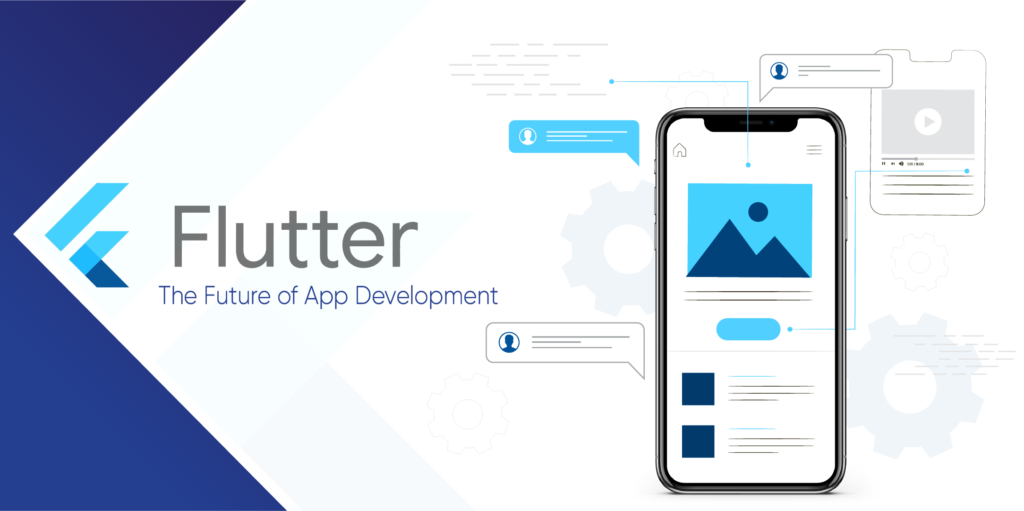With each passing year, the use of mobile applications increases and becomes popular among people. For creating, developers will provide multiple programming tools. It is a free and open-source mobile UI structure developed by Google.

What is Google Flutter?
Google created and released Flutter in May 2017; it is a free and open-source mobile UI framework. In simple words, it enables us to develop a native mobile application with a single code. It means that you can build two different apps (iOS and Android) using one programming language and one codebase.
Flutter consists of two essential things:
- An SDK (Software Development Kit)
It is a set of tools that will enable you to create applications. It includes tools that organize your code in native machine code.
- Framework (UI Library Based on Widgets)
Group of reusable UI elements (buttons, sliders, text inputs, etc.) That you can customize for your requirement.
For development with Flutter, you can use a programming language called Dart. Google created this language in October 2011 but has improved a lot over in past few years.
Google uses Flutter in multiple Google Assistant modules and the Google Hub interface. Although there are already 50,000 Flutter apps available in the Google play store, this number is increasing at a fast pace. Many e-commerce companies use Flutter, such as Alibaba Group, eBay and Groupon, and other companies, to provide their web and mobile app a uniform look.
How Flutter Works With Widget Strategy and Dart Programming Language
Flutter’s structure written in a dart programming language has the flutter engine, foundation library, and widgets. The method of development in Flutter varies from others by its declarative UI writing. Hence, there is no requirement to start from the end; before developing some components, the user needs to have a whole picture of how UI will look.
The leading idea of Flutter is that developers can create a whole interface by simply combining different widgets. The application structure consists of multiple nested widgets that can be any object. It can apply to anything from buttons to padding, and by combining widgets; the developer can easily personalize the application radically.
In Flutter, the developers can build widgets that mix with existing ones. However, there are no OEM widgets, but Flutter gallery gives developers their pre-made widgets – it is a set of applications examples that show how to use standard widgets that look similar to Android and iOS design languages.
Benefits of Flutter
Let’s look and consider why the Flutter application can be a good choice.
1. Similar to Native App Performance
The Flutter app is directly created into machine code to exclude any performance bugs during interpretation. Flutter application is ultimately similar to the native app since it does not depend on any intermediate code representation or understanding compared to other cross-platform frameworks.
2. Flutter Uses Firebase as Backend
Practically, you can benefit from Firebase in Flutter app development as you also have a native one. Additionally, Flutter enables the creation of reactive apps, and Firebase plugins offer reactive streams to work with data. That will help you to connect with specific solutions into Flutter applications easily.
3. Easy Logic Implementation
Flutter gives the latest OS features like GPS coordinates, permission managing, credentials, Bluetooth, sensor data collection, and other elements that are ready-to-use plugins supported by Google. Suppose your app is dependent on an OS-level feature that is not available as a plugin. In that case, Flutter can establish a communication channel between its Dart programming language and the native code that uses portal media.
4. Customized Kit of Widgets
Widgets are standard blocks used to create the user interface of the Flutter application. Their layering features make it easy to build applications with any complexity. Developers can use ready-made widgets from the material –UI or implement a particular element based on basic widgets.
Growing Community of Flutter
Flutter is one of the most revolutionary mobile technologies on the market proper now. For agencies looking to create programs on iOS and Android, Flutter is an excellent choice. If you’re in search of apps with outstanding UI and extreme performance — Flutter is the first-rate option as well. Flutter isn’t always a universal remedy for everything; however, it is a 100% good structure, including coverage breadth and implementation speed.